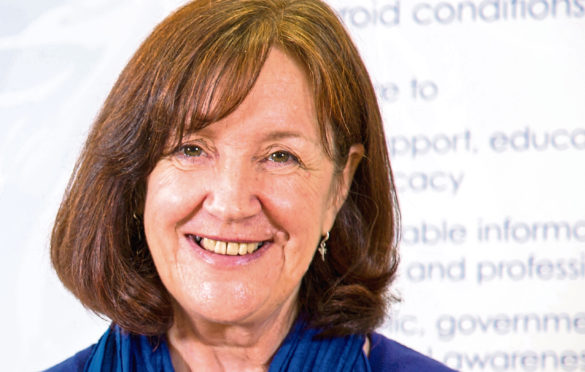
Liz Glenister had never heard of hypoparathyroidism.
It was only after years of treatment for her symptoms that she was actually told what was at the root of her problems.
Hypoparathyroidism, or hypopara for short, is a rare condition in which insufficient levels of parathyroid hormone are produced by the parathyroid glands in your neck. This leads to hypocalcaemia, low levels of calcium in the blood, which can be life-threatening if untreated.
Symptoms include tingling, twitching and tiredness, worsening to brain fog, muscle spasm and potentially memory loss, cardiac problems and kidney failure.
There may be a genetic or autoimmune disorder that affects the glands or, more commonly, they are damaged or removed by surgery.
The four tiny glands have nothing to do with your thyroid gland apart from being close to them (para means “near” in Greek).
They might be small but they’re vital.
Calcium levels in the body fluctuate constantly and the parathyroid glands regulate them and keep them stable.
Calcium is vital to just about every cell in your body, working with phosphorous to produce energy and keeping nerves and muscles functioning properly.
As well as your bones it’s vital to the health of your heart, eyes and kidneys.
Liz had thyroid surgery in 1992 for thyroid cancer, and recalls: “Before the operation, I had no idea what the parathyroids were.
“They were never mentioned and there was no information available then to help me ask the right questions. I was told simply that it was a very straightforward operation and afterwards I would just have to take a pill a day to replace the thyroid hormone.
“A small risk to the vocal chords was mentioned which concerned me as I was a teacher.”
After the operation, Liz says: “I felt very unwell and eventually I was put on an intravenous calcium drip.
“The next day I still felt dreadful and got progressively worse. By the afternoon I was feeling very weak and my hand started to cramp up in front of the registrar. But he kept looking at his clipboard, telling me that at my level the calcium shouldn’t be doing that and really wasn’t that low.
“My body began to twist up dramatically and a few minutes later I was heaved on to the bed as I went into a rapid, total body seizure, unable to move a muscle but conscious – hugely painful and massively distressing.
“It took several phials of calcium to bring me out of it and took me years to get over the trauma. The level he was looking at was from a blood test that had been taken in the morning and was no longer relevant.
“When the registrar came back he apologised and I made him promise to always look at the patient as well as his clipboard and to accept that the test result may have changed rapidly and dramatically.”
Liz was put on calcium and Alfacalcidol, a calcium regulator, before going home but she says: “My levels kept falling. The hospital monitored me and eventually told me I was bringing it on myself and discharged me.
“For many years I was left to manage my levels myself. I had frequent precipitous hypos and became a regular visitor to A&E for tests and intravenous calcium, and was many times denied a blood test until I had a seizure.
“I researched and discovered the benefits of vitamin D3 and magnesium – my levels were almost non-existent.
“Increasing those levels helped a lot but didn’t solve the problem. Finally, 10 years after the operation, two people arrived in my life.
“First was a wonderful new GP who fought my corner, sent me off to six consultants and arranged for calcium blood tests to be done whenever I needed.
“Second was the seventh consultant who confirmed the diagnosis of brittle hypoparathyroidism, agreed I was being undertreated and increased my Alfalcalcidol.
“Thanks to them and the new medication doses, my hypos are less frequent. I have more strength and energy and I have started going further afield – always in company, but it’s a big step.”
Not until some years after her surgery did Liz actually come across the term “hypoparathyroidism”.
She explains: “I was never told I had a condition at all. Years later a registrar mentioned in passing that I had hypoparathyroidism and I was at last armed with a search term.
“I came across the new USA Hypoparathyroidism Association in 2003 and as I tried to read the website through my tears, I knew I was no longer alone in the dark.
“I was determined that others wouldn’t go have to go through the same appalling experience so I founded HPTH UK – as it was first called – which went online in 2005 and now here we are.
“Never again will people have to go through all this alone – and together we will continue to campaign to secure the treatment and resources we need.”
World Hypoparathyroidism Awareness Day is on Saturday June 1.
For more information visit Hypopara UK at www.hypopara.org.uk

Enjoy the convenience of having The Sunday Post delivered as a digital ePaper straight to your smartphone, tablet or computer.
Subscribe for only £5.49 a month and enjoy all the benefits of the printed paper as a digital replica.
Subscribe